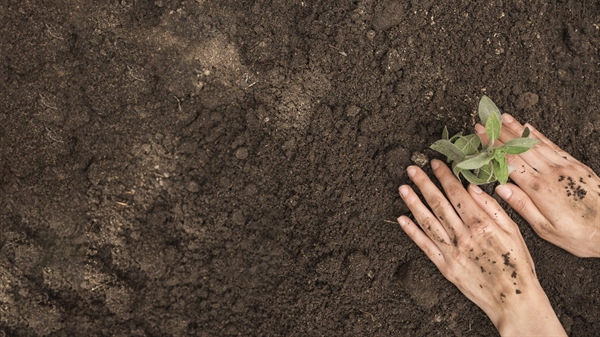

In Washington, PA, Sean Ayala and Oscar Burke Learned About Can Grass Clippings Be Used As Mulch
Grass specialists often recommend “topdressing” lawns with a thin layer of garden compost. The material is spread one-quarter to one-half inch thick in spring or fall, depending on local climate and soil. * Garden compost enhances the moisture-holding capacity of the soil, includes nutrients, and feeds soil microorganisms. These microorganisms are crucial to the intricate procedure that makes food offered to yard plants.
Compost spread out on top of thatch can likewise speed thatch decomposition and remove the labor of mechanical removal. But there is a problem: Garden compost quality varies. Whether you purchase it by the bag, select it up at the community leaf dump or have it delivered by the backyard, how can you understand that it is “great” compost? Consider these concerns: Is it at the ended up stage?Does it consist of undesirable components such as dyes or developing materials?Are there practical weed seeds in the material?Could it have pesticide residues? The parent materials and the composting process both impact the quality of the end product.
” That is to utilize compost that has actually gone through compost-specific screening.” Recognizing the issue this develops for customers and the land care industry alike, the USCC started the Seal of Screening Assurance (STA) in 2000. STA is a testing, labeling, and disclosure program developed to bring presence into the world of garden compost sales.
STA takes a look at 14 garden compost characteristics consisting of raw material, salts, p H, major nutrients, pathogens, metals, stability, and maturity. Rattie states one of the greatest issues is the existence of pesticide residuals. Well-made compost, nevertheless, carries little of this risk. “A correct composting system damages the overwhelming majority of pesticides and herbicides,” states Rattie.
” Most of STA participants offer in bulk through local landscape supply backyards, garden centers, and through direct sales,” says Rattie. USCC uses numerous resources to discover STA compost and a calculator to assist identify the amount: Find a list of 200+ STA participants Visit Purchase Compost.com and utilize the USCC’s compost calculator on the upper right of the homepage.
” Bagged compost materials just one cubic foot of product,” he says. “It takes 27 bags to get one cubic lawn. Do the mathematics!” When we utilized the garden compost calculator offered by the USCC at Buy Compost.com, we found that a one-quarter inch layer on a quarter-acre yard (10,000 square feet) requires 7.7 cubic yards or 5.9 cubic meters of garden compost.
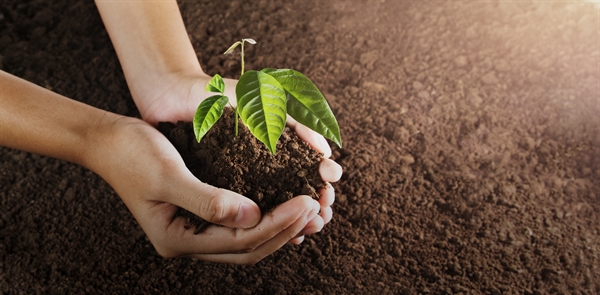
” Golf course and ball park superintendents having been utilizing this strategy successfully for several years,” he says. Garden compost is spread out in spring or fall, however there are very important subtleties. In cool-season areas, the spring application is usually lighter and the fall application much heavier. In the south, topdress warm-season yards in early spring.
Basically, garden compost is decayed natural matter but that doesn’t explain much. To a romantic, compost is the extremely essence of life. The living aspect of the soil responsible for a myriad of the most sublime and complex procedures known to guy. Organisms nourishing organisms all the method up the food cycle from basic germs to crops to people, none of it possible without broken down natural matter: compost.
In 1420, Everett Freeman and Teagan Austin Learned About Lawn Clipping Bag
It is the stuff of life, teeming with bacteria that become part of the nutrition cycle of plants. Compost can be made little scale; in a backyard or beneath a sink, or large scale; in giant windrows turned by front-end loaders or other customized equipment. In any case, it is everything about decaying raw material till all that is left is a rich, dark, musty, almost sweet-smelling substance with the consistency of potting soil.
Hay, straw, fish gurry, animal manure, twigs, tree bark, and seashells are often used to make up the composition of garden compost. The compost is generally blended 2 parts dry product (bark, leaves) to one part damp or green material (yard clippings, fish gurry) and left in either containers, piles or windrows to break down.
Breaking down compost needs to stay equally damp however not wet. Depending on the kind of composting system, it can take anywhere from a couple of months to a year or more to finish the procedure, sometimes described as “cooking.” Actively decaying compost is said to be cooking because temperature levels can reach anywhere from 120 to 160 F.
Caution Garden compost is not considered properly cooked unless it has reached these high temperatures long enough to disinfect weed seeds and get rid of hazardous bacteria found in some manures. Eventually, more intricate organisms like amoeba and nematodes consume the simpler bacteria and fungis, the pile begins cooling while the nutrients in the compost become a growing number of focused from their waste products and more decay.
Compost that is not totally finished can have an ammonia odor to it and might not deliver the preferred results or it can even damage the plants as it continues to prepare. It’s the microorganisms in compost that give it its magic. Millions of microorganisms go to work in the soil, biking nutrients and making them readily available to be taken up by the plant.

Garden compost is likewise loaded with micronutrients and other intricate biology that is incredibly advantageous for plant development. Garden compost includes life to the food web, eventually leading to much healthier turf. Excellent quality compost contains a high percentage of ended up organic matter with the rest being comprised by smaller unfinished raw material like wood chips, sawdust, seas shells and mulched leaf matter.
Compost can be spread manually with shovels by utilizing a throwing action to attempt and accomplish a layer about 1/4″ thick. It can be smoothed out with a rake to blend it in a little much better and after numerous days it will not even be visible on the surface area of the yard.
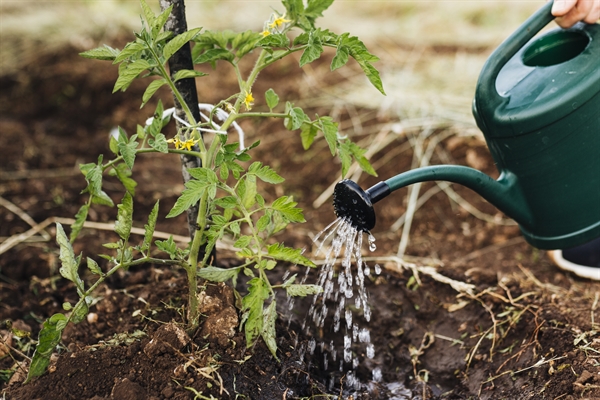
Applying the garden compost instantly after seeding and aerating is an excellent way to include the garden compost directly into the soil and supply a dive start for seedlings. Simply doing this as soon as or twice a year will benefit the lawn more than numerous quick-fix products that are hassle-free but not constantly the very best choice.
In 48423, Declan Lester and Skye Mcconnell Learned About Compost Lawns
Preferably, a yard would be topdressed with compost numerous times a year however a composting program will eventually be dictated by money and time. The target for a composting program should for a lawn’s soil to consist of 5% raw material. It appears like a little amount but it can take years to develop in specific soils.
When natural matter begins to develop in the soil, topdressing can be cut down to when or twice a year. Also, the requirement to fertilize and water the lawn will begin to decline as the soil begins to provide optimal growing conditions for turf. Weed, pest and illness pressure will decrease also, leading to cost savings over the long term as the work of the healthy soil changes the life support group of synthetic fertilizers and chemical pesticides.
House & Garden Green Living How to Top-Dress Lawns with Compost By Cathy Cromell, The National Gardening Association If you’ve gone through the effort of making rich compost of your own, you can utilize it to top-dress your yard for thicker, much healthier lawn. You can use compost to top-dress both brand-new and existing yards.
Top-dressing is specifically practical in dry climates or during dry or breezy spells, where the soil and seeds quickly dry out within hours. (If a sprouted seed dries, it’s a goner.) On an existing lawn: Top-dressing with garden compost may likewise rejuvenate existing yards. Yards typically become compressed with time from foot traffic, play, and mowing, which prevents air, water, and nutrients from circulating freely through the turf’s root zone.
To core aerate a little patch of grass, utilize a specific foot press that you can discover at your local home and garden store. For large yards, lease a machine from a devices supply company or work with a lawn maintenance firm. When top-dressing with compost, you ought to only utilize screened compost or garden compost with particle sizes of 3/8-inch or less.
Also, make sure to top-dress with garden compost that’s guaranteed free of weed seeds, or you might be sowing a future weeding nightmare into your lawn! No matter where you live, the very best time to aerate and top-dress your lawn is when it is most actively growing. This enables the grass to intensely rebound after having holes typed it.
Prevent aerating these yards throughout summertime’s intense heat, which may worry roots. Although some growth happens in early fall, these types of turfs go semi- or completely inactive as weather condition cools, making recovery after a late aeration more difficult. Also, early aeration promotes much better penetration of summertime and fall rains through the soil when it’s most useful for development.
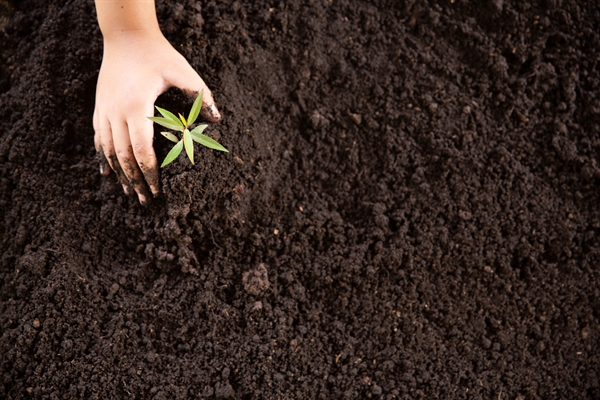
If you reside in a warm environment that allows year-round lawns, you have different options. The finest time to aerate and top-dress is early to mid-summer when your warm-season yard (such as Bermuda grass) is actively growing. You ought to likewise use compost top-dressing (without aeration) after overseeding your summer season yard with a cool-season yard (such as ryegrass) in the fall.
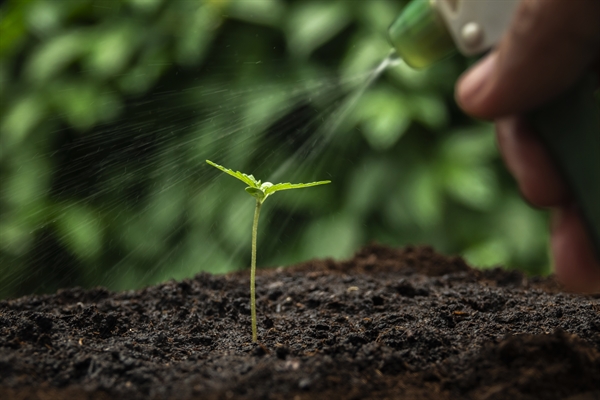
In 11530, Carolyn Walker and Christopher Sutton Learned About Grass Clipping Mulch
The arrival of summer season reminds us that it’s not too late to nourish your yard the healthy method with natural garden compost from Planet Natural. As lawn-spraying services expand their grip on suburbia it is very important to keep in mind that utilizing organic practices to encourage yard in your yard safeguards your animals and family from damaging chemical fertilizers and herbicides.
It will significantly increase helpful microbial activity in your soil, benefiting your yard much more. And it’s a good method to deal with the areas in your lawn that are thin, brown and unhealthy. From Organic Lawns, Healthy Soil: “Developed yards benefit significantly from a single annual application of garden compost, a lot more considerably from two.
Depending on your lawn’s size, a wheel barrow and a shovel might be the finest method to disperse compost around your backyard, followed by a good raking (a push broom will likewise work) to distribute it more equally. Though hard to find and bothersome to utilize effectively, a compost wheel or peat spreader can distribute garden compost throughout small backyards though they can be tough to press and need to be refilled typically.
Compost ought to be spread out no greater than a half-inch deep. The concept is not to bury lawn blades, smothering them and keeping them from sunlight. If that implies less than a half-inch of compost, then decrease your application. You want turf blades exposed to oxygen and sunshine. Using compost to problem locations will also help treat them.” Adding compost will assist your lawn’s soil maintain moisture throughout the long hot months of summertime, keeping your lawn greener longer.
Do Compost: Grass clippings, leaves, stalks, dead plants, branches as much as pencil diameter, and many weeds. Don’t Garden compost: Weed seeds and intrusive weeds like ivy (they resprout!), infected plants, family pet waste, clippings treated with weed or bug killers, or food waste. Rather, try the rodent-resistant techniques explained in Food Waste Composting.
It takes 6 to 12 months for soil animals to alter many lawn waste into finished garden compost. For faster composting, keep your pile as damp as a wrung-out sponge. Slice up stalks and branches. Mix “green” products like turf clippings with “browns” like fall leaves and stalks. Sign Cause Service Bad smells Stack too damp, no air, or consists of food or pet waste Turn pile.
Eliminate food. Pile is dry Inadequate water Turn stack. Add water to keep as wet as a sponge. Moist enough, however slow composting Not enough “greens” Turn pile. Add “greens” like yard, plants, or manure Slimy grass, ammonia odor Too much fresh grass in pile Leave clippings on lawn, rather of composting.
Stack shrunken, but looks un-decomposed Top too dry, completed garden compost is at bottom Harvest finished compost from bottom. Start brand-new stack with un-composted material. Contact the specialists at the Garden Hotline at (206) 633-0224 (language interpretation readily available) or at Garden Hotline. Composting at House Guide (pdf) – Demand a free copy.
In Portland, ME, Nigel Carpenter and Russell Rangel Learned About Machine To Pick Up Grass Clippings
Garden Compost Resource List (pdf) – Lists bin providers, tools, and more. Composting Questions & Responses (pdf) – Responses to some common questions. Tilth Alliance – Offers classes in composting and organic gardening, and home-made compost bin strategies.